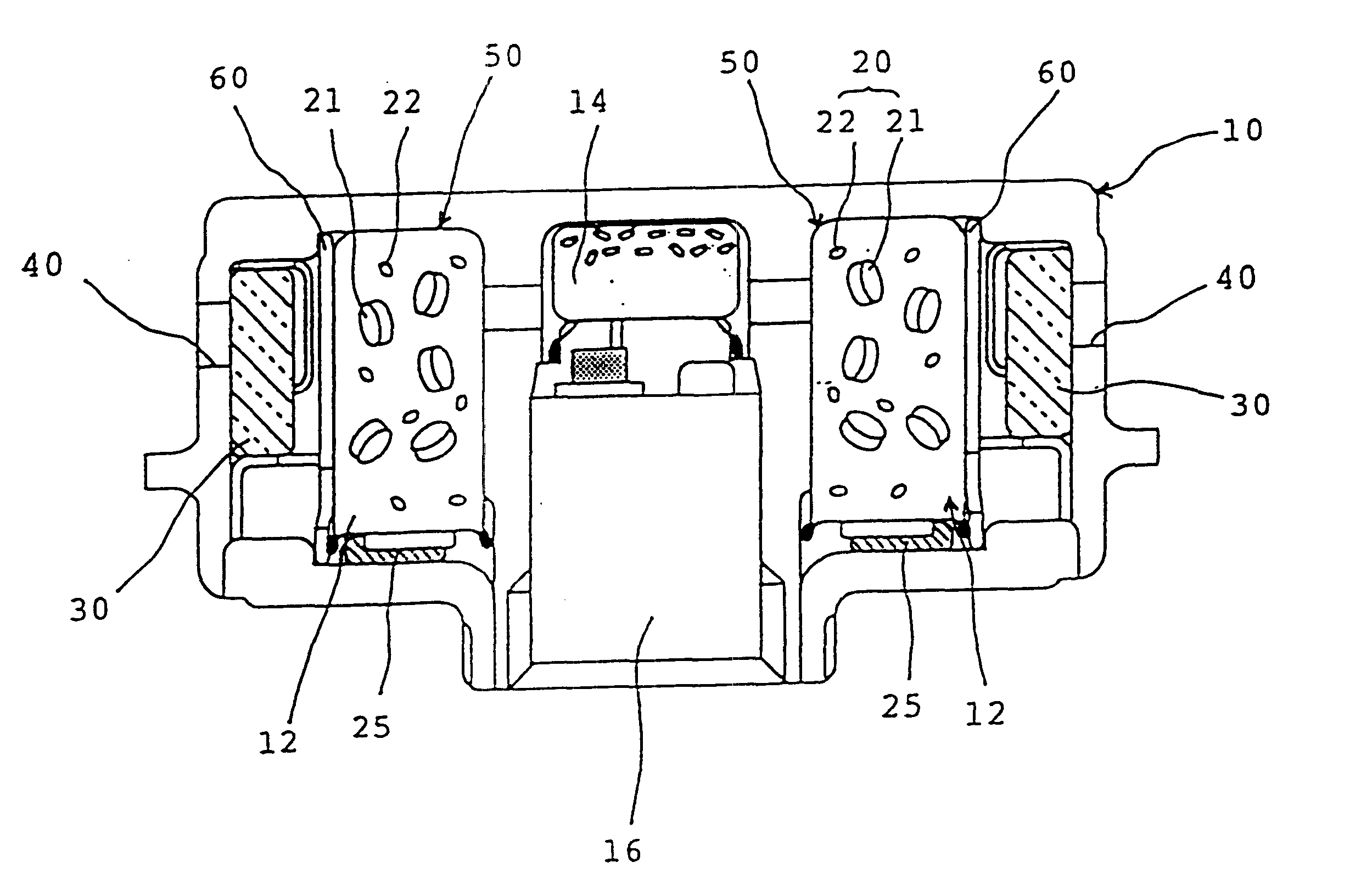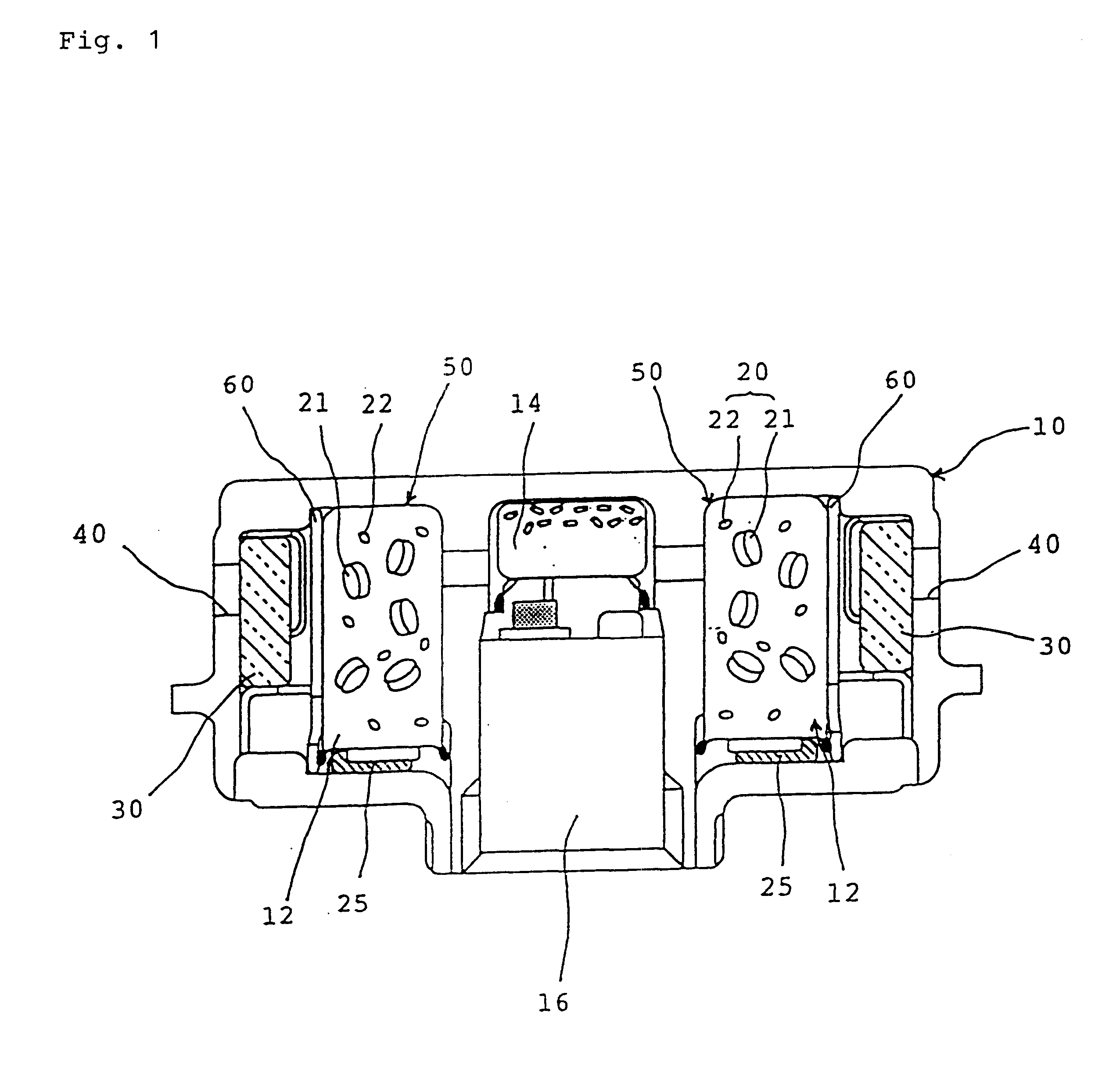Gas generating agent composition and gas generator
a technology of gas generator and gas generating agent, which is applied in the direction of pressure gas generation, explosives, weapons, etc., can solve the problems of affecting the reliability of the air bag system, affecting the thermal stability of the air bag, and naturally reducing the decomposition temperatur
- Summary
- Abstract
- Description
- Claims
- Application Information
AI Technical Summary
Benefits of technology
Problems solved by technology
Method used
Image
Examples
production example 1
29 parts of azodicarbonamide (ADCA) and 10 parts of CuO were mixed using a rocking mixer. This was moved to a slurry mixer, and a starch aqueous solution obtained by dissolving 1.5 parts of soluble starch into 10 parts of water was added. These were wet-mixed. Subsequently, 23 parts of KClO.sub.4 and 48 parts of KNO.sub.3 were added, and these were further wet-mixed. This was passed through a wire mesh having an opening of 1.7 mm to form granules, and the granules were partially dried so that the water content became 0.5%. The granules were formed into pellets of diameter 5 mm.times.thickness 2 mm with a pelletizer, and dried well with a drier of 80.degree. C. to obtain a gas generating agent.
example 1
The thermal stability test 1) was conducted at 105.degree. C. using a gas generating composition (not integrally molded. The same is applied to the following) comprising 40 g of the pellets of the gas generating agent in Production Example 1 and 8 g of a synthetic zeolite 13X type (pore diameter approximately 10 .ANG.).
As a result, the weight loss ratio of the gas generating agent after 200 hours was 0.51%, and the weight loss ratio of the gas generating agent after 400 hours was 1.06%. It was identified that in comparison with Comparative Example 1, the weight loss was markedly decreased and the incorporation of the synthetic zeolite was greatly effective for improving the thermal stability.
example 2
The break strengths of the pellets of the gas generating composition used in Example 1 before the thermal stability test, after 200 hours and after 400 hours were measured, and were 6.52 kg, 6.40 kg and 6.49 kg respectively. Almost no decrease in the break strength of the pellets was observed. It was found that in comparison with Comparative Example 2, the incorporation of the synthetic zeolite prevented the decrease in the strength of the pellets before and after the thermal stability test. As the measured value of the break strength here, the average value of 20 pellets optionally taken was used.
PUM
 Login to View More
Login to View More Abstract
Description
Claims
Application Information
 Login to View More
Login to View More - R&D
- Intellectual Property
- Life Sciences
- Materials
- Tech Scout
- Unparalleled Data Quality
- Higher Quality Content
- 60% Fewer Hallucinations
Browse by: Latest US Patents, China's latest patents, Technical Efficacy Thesaurus, Application Domain, Technology Topic, Popular Technical Reports.
© 2025 PatSnap. All rights reserved.Legal|Privacy policy|Modern Slavery Act Transparency Statement|Sitemap|About US| Contact US: help@patsnap.com



